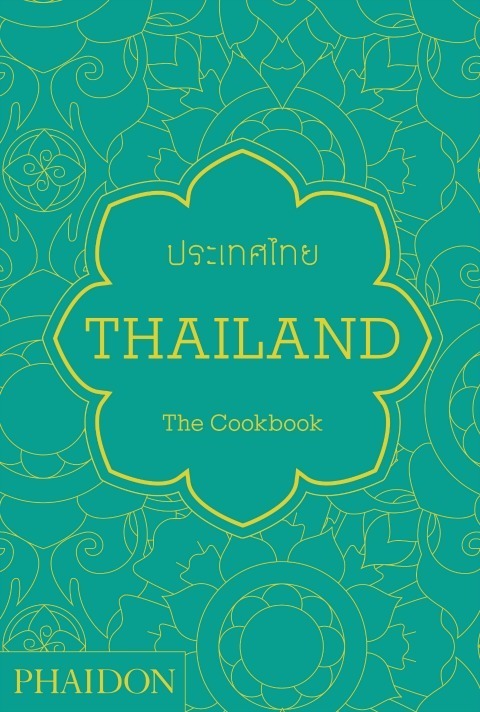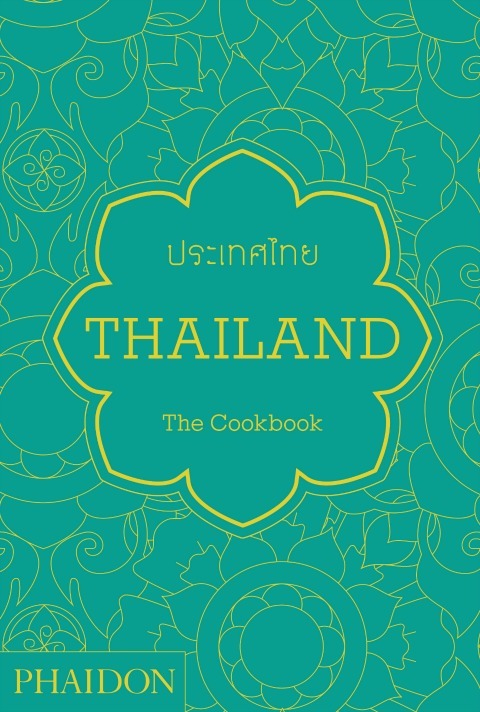Authentic Thai Cooking: The Basics
Jean-Pierre Gabriel, author of the definitive Thai cookbook, Thailand: The Cookbook, shares the basics of cooking an authentic Thai meal.
In order to bring together all the information and collect the hundreds of recipes that have made this book possible, Kanokrat Wanarat — known by her nickname, Khun Tip — our two our assistants, Khun Stop and Khun Pat; our driver, Suriya Yalor; and I traveled more than 16,000 miles (25,000 kilometers). We spent hours — that often seemed interminable — in our minibus moving from point A to point B. Khun Tip, director of agrotourism, promotion, and development at the Ministry of Agriculture, drew together colleagues and friends from the Ministry's immense network of contacts, including many in some of the country's most remote areas, and it was thanks to their day-to-day, on-the-ground expertise that we were able to uncover one marvel after the next.
The approach we took to gather our information stayed the same throughout. All the cooks we visited prepared recipes (often just one) specific to their area, each one evoking the sensuous allure of the local land. For each one, Khun Tip, Khun Stop, and Khun Pat took care of the list of ingredients, which I arranged with a view to photographing them. Next came the cooking of the meal in question, which was then itself photographed on a plate or a traditional dish. At this stage, the recipes were documented in Thai. They were later translated into English.
'The Rules'
Thai cuisine is founded on a few overriding principles. The most important of these is the notion that each dish should comprise the four fundamental taste areas: salt, sweet, sour, and spicy. The spice comes from chiles; sweet notes come from cane or palm sugar, the second of which has a more intense flavor. Sourness or acidity is often sourced from tamarind and lime juice. Added to this is the bitterness that comes from various fruits and vegetables, such as pomelo, round eggplants (aubergines), and bitter gourd.
[pullquote:left]A salty character is often derived from a combination of salt and ingredients rich in salt: soy sauce, for example, or a paste made from fermented soybeans, also known as thua nao; not to mention products extracted from the fermentation of fish or shrimp (prawns). The central ingredient of fish sauce, or nam pla, is small fish from the anchovy family. A lesser-known variation of this, tai pla, is made using the entrails of fish such as mackerel. Toward the south of the country, another fish sauce, budu, can be found, and is made using similar methods. In northeast Thailand, freshwater fish (usually snakehead) is fermented, and then both the flesh and the juice — respectively called pla ra and nam pla ra — are used in cooking. Tiny shrimp are also left to ferment in the southern peninsula to form a shrimp paste, or ka pi, which is a popular ingredient throughout the country.
As with many cuisines in the Far East, these ingredients are natural flavor enhancers, characterized by high levels of umami. They are effectively the product of fermentation processes, which transform protein on the microscopic level into peptides and amino acids with excellent aromatic potential. The salt content, which is often as high as 30 percent for a soy or fish sauce, acts as a preservative. Even if each region has its own varieties, with dishes that might be — for cultural or traditional reasons — more sweet or more sour or more spicy, diners have the option of adjusting the balance to suit their personal taste. That is why — wherever you are in the country — you will find tables adorned with a basket filled with various different dispensers: sugar, fish or soy sauce, vinegar, chile flakes, or fresh chiles.
Cooking Methods and Equipment
The word "cuisine" naturally implies "cooking methods." As well as rendering some food more digestible — more edible, even — cooking develops flavors and creates a wide range of textures. Since the dawn of time, we have relied on the wood or coal barbecue. Then there is pot-based cooking, where ingredients are left to simmer in water flavored with herbs and spices. But it is from China that we inherited two tools that are seen everywhere in Thai cuisine: the steamer and the wok. Steaming techniques are used to prepare the ubiquitous glutinous (sticky) rice for both desserts (frequently in small porcelain containers called talal cups) and for certain savory dishes. Traditionally, glutinous rice is steamed in a cone-shaped woven bamboo basket, which sits in a tall aluminum pan. Water is poured into the bottom of the pan and brought to a boil. The rice is soaked overnight, or for at least three hours, and then placed in the basket and steamed for 30 to 35 minutes. Long-grain rice, such as jasmine rice, is usually steamed in a clay pot, or boiled. For steaming vegetables, fish, and meat, however, a single or multilayered aluminum steamer is used. Water is poured into the bottom layer and brought to a boil. The food to be steamed is often wrapped in cheesecloth (muslin) or a banana leaf before being placed in the steamer. This is also how the famous steamed fish or meat custards, or hor mok, are prepared, generally in little banana-leaf containers.
Meanwhile, woks of every size are an extremely important, indispensable utensil throughout Thai cooking. They are used most often for stir-frying, and, to a lesser extent, for deep-frying. A nonstick wok is best for stir-frying rice or noodle dishes, while stainless-steel or cast-iron woks are more suitable for stir-frying fish, meat, or vegetables. The best expression of a cook's skill can be found at the wok, where ingredients are stir-fried and dishes blending a variety of flavors, textures, and spices are produced in a matter of minutes. To arrive at this mastery of flavor and texture, it is important to strictly control the order in which the dish's ingredients come into play, always keeping in mind their cooking times. First, there is the issue of bringing out the staple aromas — for example, those from a chile paste or from garlic. To achieve this goal, it is essential that you also know the importance of applying heat — with or without oil, or by using coconut milk that has had its oil separated from the rest of the liquid — until the mixture becomes fragrant. Next are the other ingredients, which need to be added quickly: vegetables, meat, or fish. Only then do the final touches come — often after the wok has been removed from the heat — in the form of various spices and other more vibrant notes. Here, we are talking about herbs: mint, cilantro (coriander), basil... Everything comes together — flavor, texture, and freshness. This is where the true magic and character of Thai food is to be found.
There is another fundamental piece of equipment used in preparing Thai food, a tool as vital as the kitchen knife: a large earthenware mortar (crock), complete with a wooden or stone pestle. In this, the famous chile pastes, or nam phrik (nam meaning "liquid," and phrik meaning "chili") are made. Chiles, garlic, shallots, turmeric, tomatoes, ginger, galangal, cilantro (coriander) root, peppercorns, and more are pounded into a coarse or fine paste. Such pastes are used to spice up curries and other dishes, or simply enjoyed as condiments that accompany main dishes of rice, vegetables, fish, and meat. While a food processor or blender might be an easier and faster option, crushing the fibers at the same time as blending all the ingredients in a mortar allows their aromas to be fully released. It is best to use a large, heavy stone mortar and pestle and to gradually add the ingredients to the mortar in small amounts. Start by pounding the dry and hard ingredients, then add the softer, wetter ingredients, which will require less work. This will make it easier to grind.
The Thai Table
Whether you are in the street or in a restaurant, the Thai table is — in cultural and social terms — a place for sharing. If you are enjoying the delights of Thai street food, a single dish might suffice, or you have the option of flitting from one stall to the next for a more varied menu. In a restaurant, it is usual to order a variety of dishes, such as soup, salad, stir-fried vegetables, grilled or fried fish or meat, curry, and maybe noodles, which are served and enjoyed at the same time instead of having individual courses. Food is generally eaten on plates with a fork and spoon (bowls are reserved for soups) and each dish is sampled in turn with a serving of rice. (Although this is not so in the North and Northeast, however, were glutinous [sticky] rice is usually eaten with the right hand.) And portion sizes vary... stir-fried vegetables, such as morning glory, or fried chicken with ginger, might be intended for two, while a whole fish — a tilapia, for instance — could be shared among four or six people. Rice is served on demand, on an all-you-can-eat basis. There is always a mix of spicy and mild dishes. Curries and spicy dishes are usually served with vegetables (either raw or boiled), herbs, or wild plants, all of whose relative sourness softens the fieriness of the chiles in the mouth. This is how Thai cuisine manages to strike a balance between different textures and flavors with an irresistible, lingering freshness.
Presentation and decoration also play an important role at the Thai table. Fruits and vegetables, particularly those served with a dip or dipping sauce, are often carved into exquisite flower, leaf, and bird shapes. These are created using special paring knives. Glutinous (sticky) rice, meanwhile, is traditionally served in a woven bamboo basket, which is not only decorative but also functional, in that it allows the rice to retain its heat. Other delicacies are often served wrapped in or placed on a banana leaf, such as candied sugar palm fruit. Many desserts, too, are presented in a decorative way. Tapioca balls in coconut milk, or khanom krong kaeng ka thi, are pressed into a special mold and imprinted with a delicate pattern, while the recipe colorful mung bean noodles in coconut milk, or sa lim, uses a Thai scented candle to infuse the dessert with a special aroma.
Interested in trying a recipe from the book?
Click here for Jean-Pierre's Roasted Duck Noodle Soup Recipe.
Excerpted with permission from Thailand: The Cookbook, © Jean-Pierre Gabrriel, courtesy of Phaidon.

